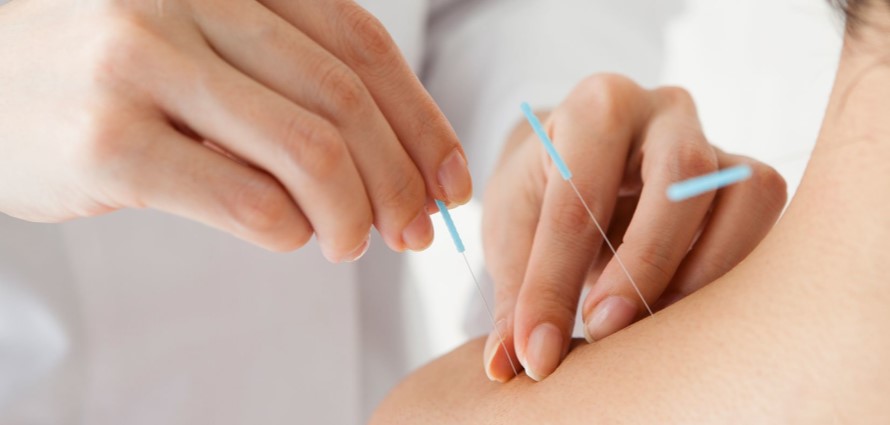Acupuncture & Dry Needling
Joint pain and stiffness are common side effects of cancer treatment and other health conditions. Fortunately, there are ways to help reduce that discomfort without resorting to more medication.

Acupuncture can help to reduce joint pain, improve fatigue, relieve nausea, aid your sleep, and lessen muscle aches and other types of pain.
Dry needling is a technique that can be used by specially trained physiotherapists to treat tightness and trigger points.
What is acupuncture?
Acupuncture is an ancient Chinese medical treatment that is gaining credibility and use in western medicine. With acupuncture, very thin, sterile needles are inserted into the skin at key points along the body’s meridian (energy) lines. The theory behind this treatment is that it restores energy balance (what the Chinese call “qi”) in the body, thus relieving pain and illness. Acupuncture is relatively pain-free with few side effects, takes a short amount of time to administer, and is very cost-effective when compared to prescription medication and other treatments for joint pain.
What are the benefits of acupuncture?
Several studies, including one done jointly by the American Pain Society and the American College of Physicians, have found acupuncture to be beneficial in relieving back and joint pain. Both the American Cancer Society and Cancer Research UK have acknowledged that acupuncture can help people overcome some of the side effects of cancer treatments, including joint pain. However, joint pain isn’t the only condition that can be helped with acupuncture. It can also help to reduce fatigue, relieve nausea, improve sleep, and lessen other types of pain, such as muscle aches and lower back pain.
What is dry needling?
Dry needling is a technique similar to acupuncture that is used by specially trained physiotherapists to treat myofascial problems such as tightness and trigger points. A trigger point is a small “knot” deep in the muscle which is painful when pressed. Dry needling uses very small, sterile needles to help release tight bands of tissue and restore normal muscle tone. It can also be used to promote muscle healing, decrease pain, and restore normal muscle function. Dry needling does this by quickly and precisely targeting deep areas of the muscles and other layers that are home to trigger points. Although trigger points can also be treated effectively with manual therapy, these techniques can be uncomfortable and time-consuming. In contrast, dry needling can often give faster, more effective results than traditional manual therapy alone.
Why do trigger points need to be treated?
The problem with trigger points, or knots, is that they can affect other parts of your body, not just the muscle that is involved. The human body is connected by fascia, which holds our muscles, bones, nerves, and other structures in place while allowing us to move freely. Fascia can become compromised or “kinked” by a trigger point. Because of the pain caused by a trigger point, you may start to move differently and strain muscles, nerves and tissues that had been working normally. This can lead to more pain and result in the development of trigger points in other areas.
If you’re experiencing stiff and/or painful joints as a result of your surgery or cancer treatment, acupuncture and dry needling therapies can help relieve pain and soreness, increase mobility, and get you back to doing the things you love.
At Breast Rehab, a physiotherapist will look at the entire chain of tissues in your body to find where the problem started. Acupuncture or dry needling may be used to target and treat the energy or trigger points. Your therapist will also give you exercises and stretches to help correct your movement, improve your posture, and prevent other problem areas from forming.

